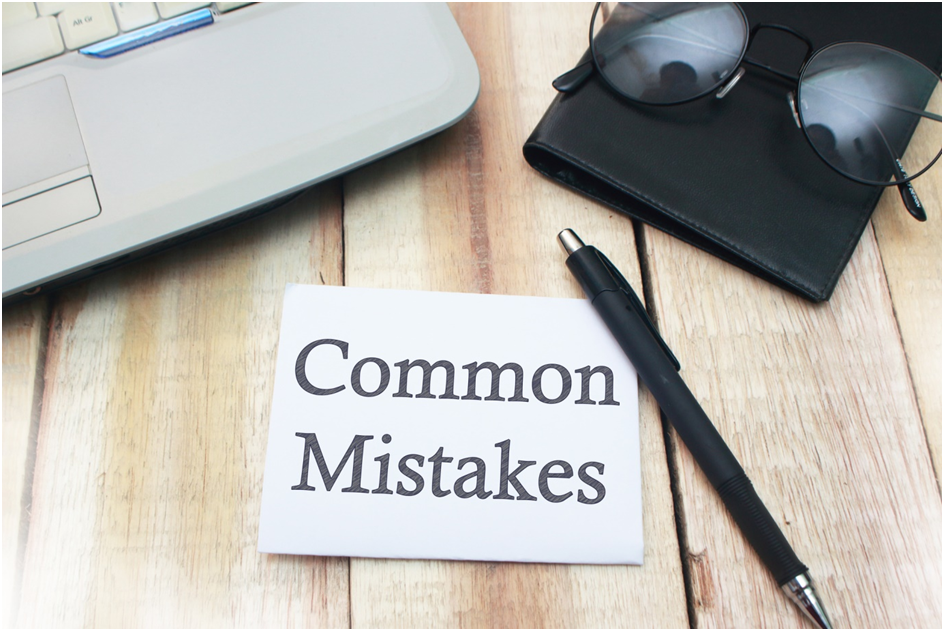Common Mistakes to Avoid in Paid Media Marketing

Paid media marketing is one of the most dynamic and result-driven strategies in the digital marketing world. Whether you’re aiming for brand awareness, lead generation, or direct sales, paid media campaigns can help you achieve these goals faster than organic methods. However, it’s essential to approach paid media marketing with a strategic mindset to maximize its potential.
Unfortunately, many businesses, especially those just starting with paid advertising, tend to make common mistakes that hinder the effectiveness of their campaigns and can lead to wasted budgets. In this blog, we’ll explore the most common pitfalls in paid media marketing and how you can avoid them to ensure your campaigns deliver strong returns on investment (ROI).
1. Not Defining Clear Campaign Objectives
One of the biggest mistakes in paid media marketing is running ads without a clear, specific goal. Without a defined objective, how can you measure the success of your campaign? A lack of clarity leads to poor targeting, wasted ad spend, and a campaign that does not align with your business’s overall marketing strategy.
Solution:Before you launch any paid media campaign, identify clear goals. Are you trying to drive traffic to your website? Increase product sales? Or raise brand awareness? Ensure your objectives are measurable (e.g., “Increase website traffic by 20% within 3 months”). Clear goals provide direction for targeting, budget allocation, and ad creatives, which ultimately ensures campaign success.
2. Ignoring Audience Targeting
Audience targeting is the foundation of any successful paid media campaign. Many advertisers fail to define their target audience clearly and end up targeting too broad or irrelevant groups. If you’re targeting everyone, you’re targeting no one. The wrong audience results in low engagement, low conversion rates, and a high bounce rate.
Solution:Narrow down your audience to reach the people most likely to be interested in your product or service. Use tools like Facebook Audience Insights or Google Analytics to gather data on demographics, interests, behaviors, and more. Use this data to create precise buyer personas and make sure your ads are shown to the right people. By targeting the right audience, your chances of success will dramatically increase.
3. Skipping Keyword Research
Whether you’re running a Google Ads search campaign or a paid social media ad, keyword research is crucial. Many marketers make the mistake of skipping in-depth keyword research, either because they believe they already know what works or because they fail to identify negative keywords. This can lead to your ads showing up for irrelevant search queries or not being visible enough to those who are genuinely interested in your product.
Solution:Invest time in comprehensive keyword research using tools like Google Keyword Planner, SEMrush, and Ahrefs. Identify both high-volume keywords and long-tail keywords with lower competition. Negative keyword research is equally important to avoid wasting ad spend on irrelevant searches. With proper keyword targeting, you’ll reach users who are genuinely looking for what you offer, improving click-through rates (CTR) and conversions.
4. Setting Unreasonable Budgets
Another common mistake is setting a budget that is too low or inconsistent. While it’s important to be mindful of your spending, not allocating enough budget for your campaigns can result in limited reach, poor ad delivery, and insufficient data collection. On the other hand, constantly fluctuating budgets can confuse the algorithms and impact your campaign’s overall performance.
Solution:Set a consistent, realistic budget that aligns with your campaign objectives. If you’re running a Facebook Ads campaign, for example, calculate the average cost-per-click (CPC) or cost-per-impression (CPM) and ensure your budget is sufficient to generate results over a period. Make sure to monitor and adjust your budget regularly based on performance metrics and ROI.
5. Failing to Optimize for Mobile Users
With mobile devices accounting for more than half of all global web traffic, it’s crucial that your ads and landing pages are optimized for mobile users. Ads that aren’t mobile-friendly or landing pages that take too long to load on mobile devices can lead to a poor user experience, which in turn lowers your conversions.
Solution:Ensure that your ads and landing pages are fully mobile-optimized. This includes ensuring they load quickly, the text is easy to read, and the user interface is simple and intuitive. On Google Ads, make use of mobile bid adjustments to allocate more budget toward mobile users if your analytics indicate strong performance from that audience.
6. Ignoring A/B Testing
Running ads without testing them is like gambling with your budget. Many marketers create a single ad and hope it performs well, but that’s not a strategy. If you’re not A/B testing your ads, you won’t know what’s truly working and what needs improvement.
Solution:Regularly test your ads to see which combinations of ad copy, images, call-to-action (CTA), and landing pages perform the best. A/B testing allows you to make data-driven decisions and continually optimize your campaigns for maximum ROI. For example, test two versions of an ad with different headlines or images and measure which one garners more clicks.
7. Overlooking the Importance of Landing Pages
The landing page is where your potential customers land after clicking on your ad. If your landing page is slow to load, irrelevant, or difficult to navigate, visitors will quickly bounce. A poor landing page experience will negate all the hard work and budget you’ve put into creating the perfect ad.
Solution:Your landing page should be aligned with your ad. Make sure the content is relevant to the ad, and the call-to-action is clear and prominent. A user-friendly design and fast loading times are essential. Tools like Google’s PageSpeed Insights can help assess and improve your landing page’s performance.
8. Forgetting About Retargeting
Many advertisers focus only on acquiring new customers, forgetting that retargeting can be one of the most effective ways to increase conversions. Retargeting allows you to show ads to users who have already interacted with your brand but didn’t convert the first time.
Solution:Implement a retargeting strategy for users who have visited your website or engaged with your ads but haven’t completed a purchase or taken another desired action. Tools like Google Ads and Facebook Ads provide powerful retargeting features that let you serve specific ads to people based on their past behavior. Retargeting can significantly increase conversion rates, as these users are already familiar with your brand.
9. Focusing Only on Direct Conversions
While direct conversions are crucial, paid media campaigns can also be used to build brand awareness, nurture leads, and engage your audience. Focusing solely on short-term conversions can limit your growth potential.
Solution:Think about the entire customer journey. Focus on generating engagement, raising awareness, and nurturing leads along the way. Consider creating campaigns for different stages of the sales funnel, from awareness to consideration to decision-making. By doing so, you’ll be able to build a more sustainable and effective paid media strategy.
10. Not Tracking Metrics or ROI
Running ads without properly tracking key performance indicators (KPIs) or ROI is a serious mistake. If you’re not tracking conversions, CTR, cost per acquisition (CPA), and other essential metrics, you won’t know if your campaigns are successful or where you need to improve.
Solution:Set up proper tracking and use analytics tools like Google Analytics and Facebook Ads Manager to monitor the performance of your ads. Track the metrics that align with your business goals, and use this data to optimize your campaigns continuously. Without monitoring and adjusting based on performance, you’ll miss opportunities to increase your ROI.
11. Mismanaging Ad Placements
Your ad placements play a critical role in your campaign’s success. Automatically allowing ads to be placed on random websites or platforms may lead to poor performance, irrelevant audiences, and wasted ad spend.
Solution:Take control of your ad placements. Use platform-specific tools to manually select placements that are most relevant to your target audience. For instance, on Facebook, you can choose to place ads in specific feeds, groups, or stories that resonate with your audience. Similarly, on Google Ads, ensure your ads appear on websites that are closely related to your industry or niche.
12. Overcomplicating Campaigns
Paid media campaigns can get complex, but overcomplicating them can be detrimental. When you try to run too many campaigns with too many variables, it can confuse the algorithms and make it difficult to optimize effectively.
Solution:Keep your campaigns simple and straightforward. Focus on one or two key goals and test your ads thoroughly before expanding. Once you have proven success with a basic campaign, scale it up and introduce more complex strategies.
Paid media marketing offers incredible potential for businesses looking to drive growth, build brand recognition, and increase conversions. However, it’s crucial to avoid common pitfalls that can lead to wasted budgets and poor performance. By setting clear goals, targeting the right audience, optimizing your ads, and tracking performance, you can ensure that your paid media campaigns are effective and generate a significant return on investment.
Paid media campaigns require constant monitoring, testing, and refining, but with the right strategies in place, you can avoid these common mistakes and propel your business toward long-term success.





